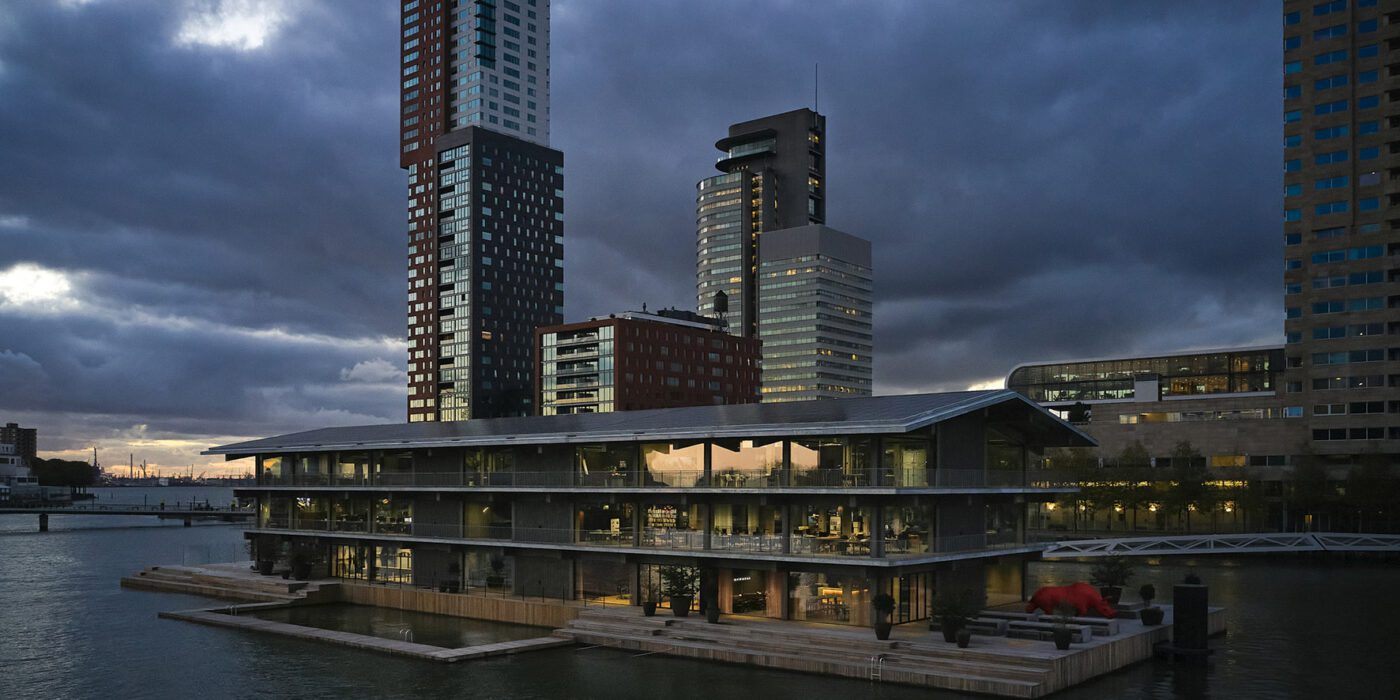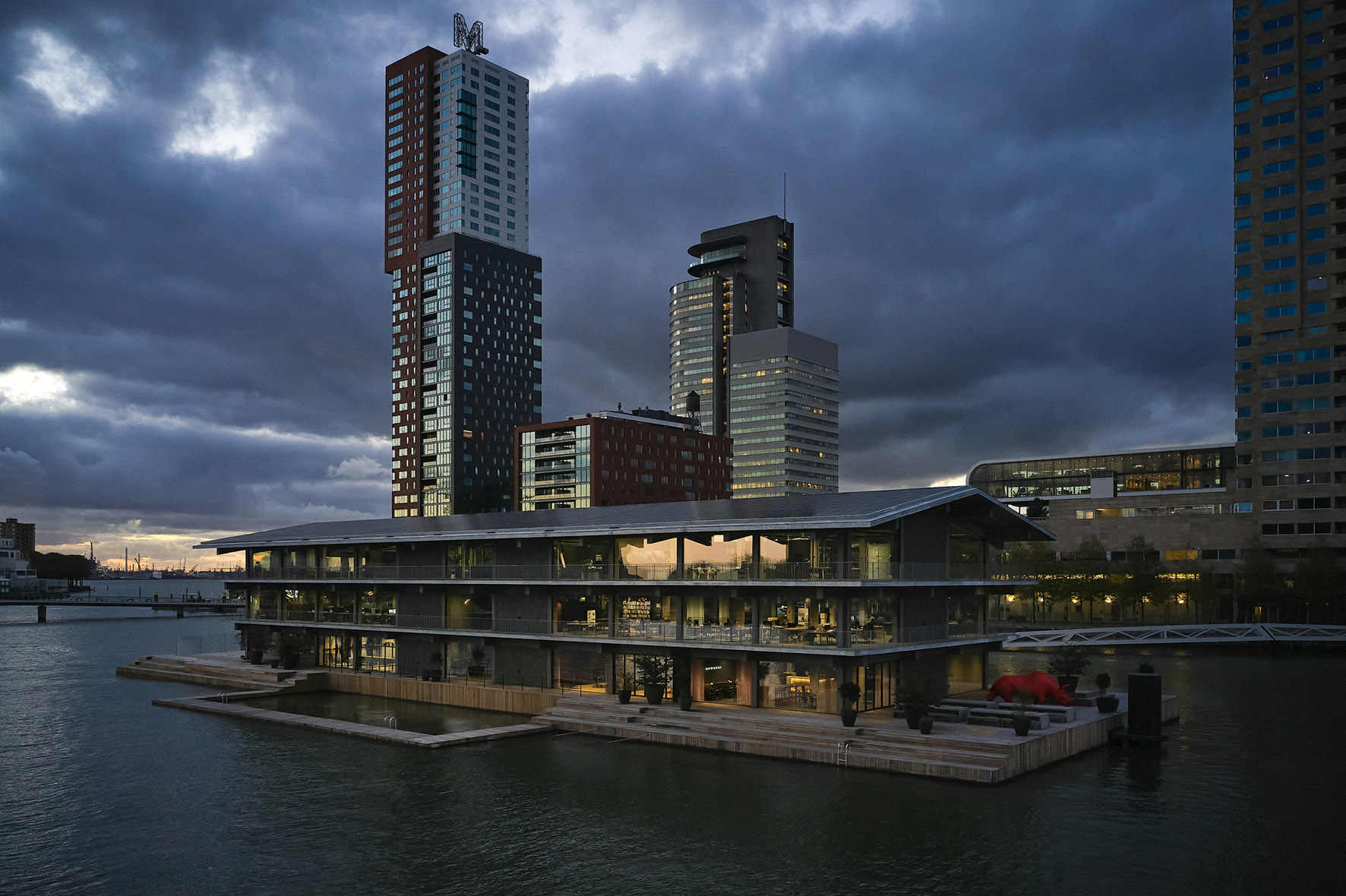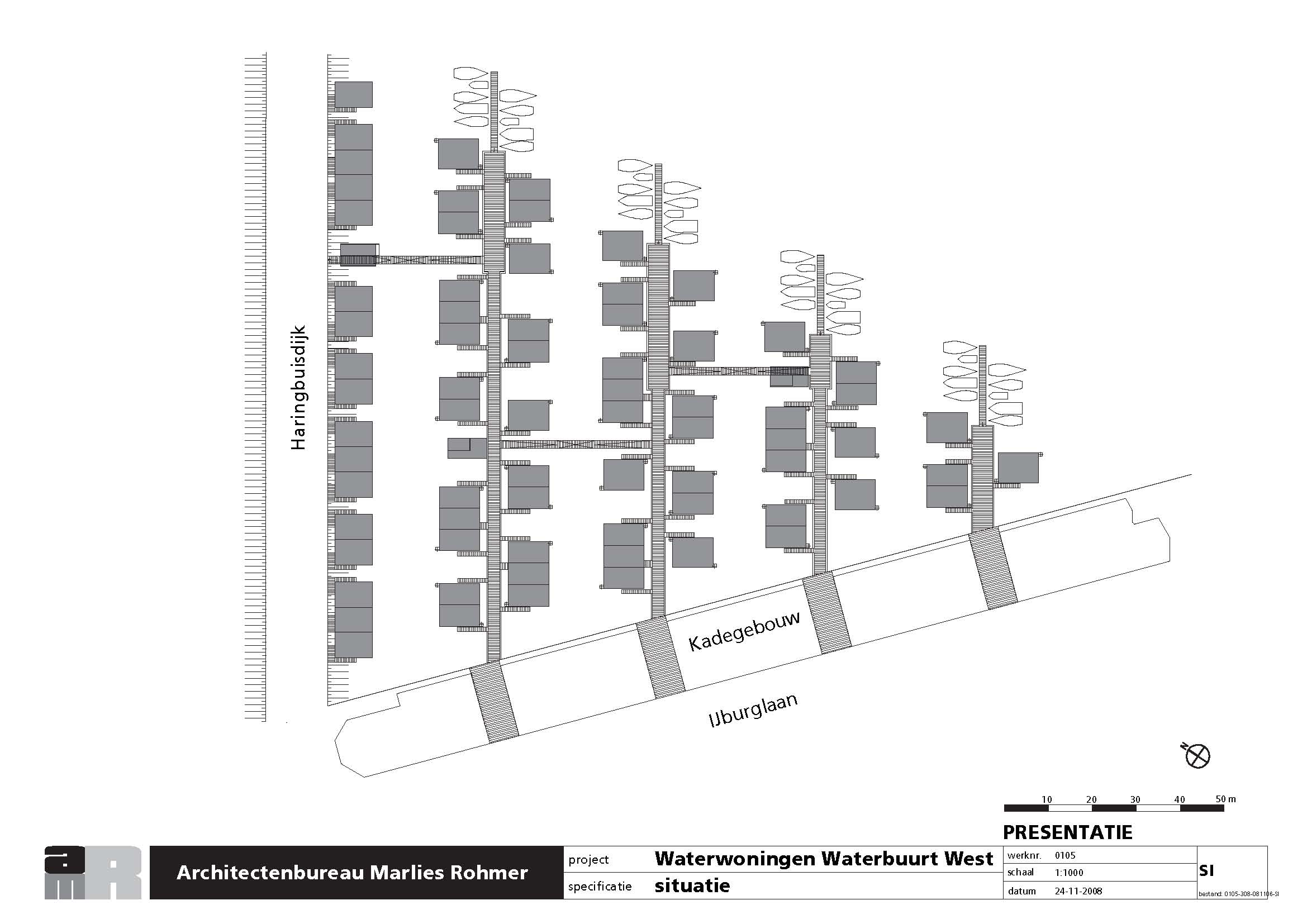Amphibious Architecture: Designing Resilient Coastal Communities for the Future
Architizer’s 12th Annual A+Awards are officially underway! Sign up for key program updates and prepare your submission ahead of the Main Entry Deadline on December 15th.
As climate change unfolds, bringing about rising sea levels, increased occurrences of flooding and a surge in climatic events, the concept of living in a floating home — or houseboat — could potentially emerge as a pragmatic and innovative solution to face the environmental challenges associated with coastal living. Opting for a floating home is not just a practical choice but a visionary one. It signifies a departure from the vulnerabilities associated with traditional coastal housing and an embrace of a lifestyle that aligns with the dynamic and ever-changing character of coastal ecosystems. It is a bold step towards a future where adaptability and ingenuity are at the forefront of our response to the challenges posed by climate change along our coastlines.
Tides of Change: The Integration of Floating Houses in Urban Spaces
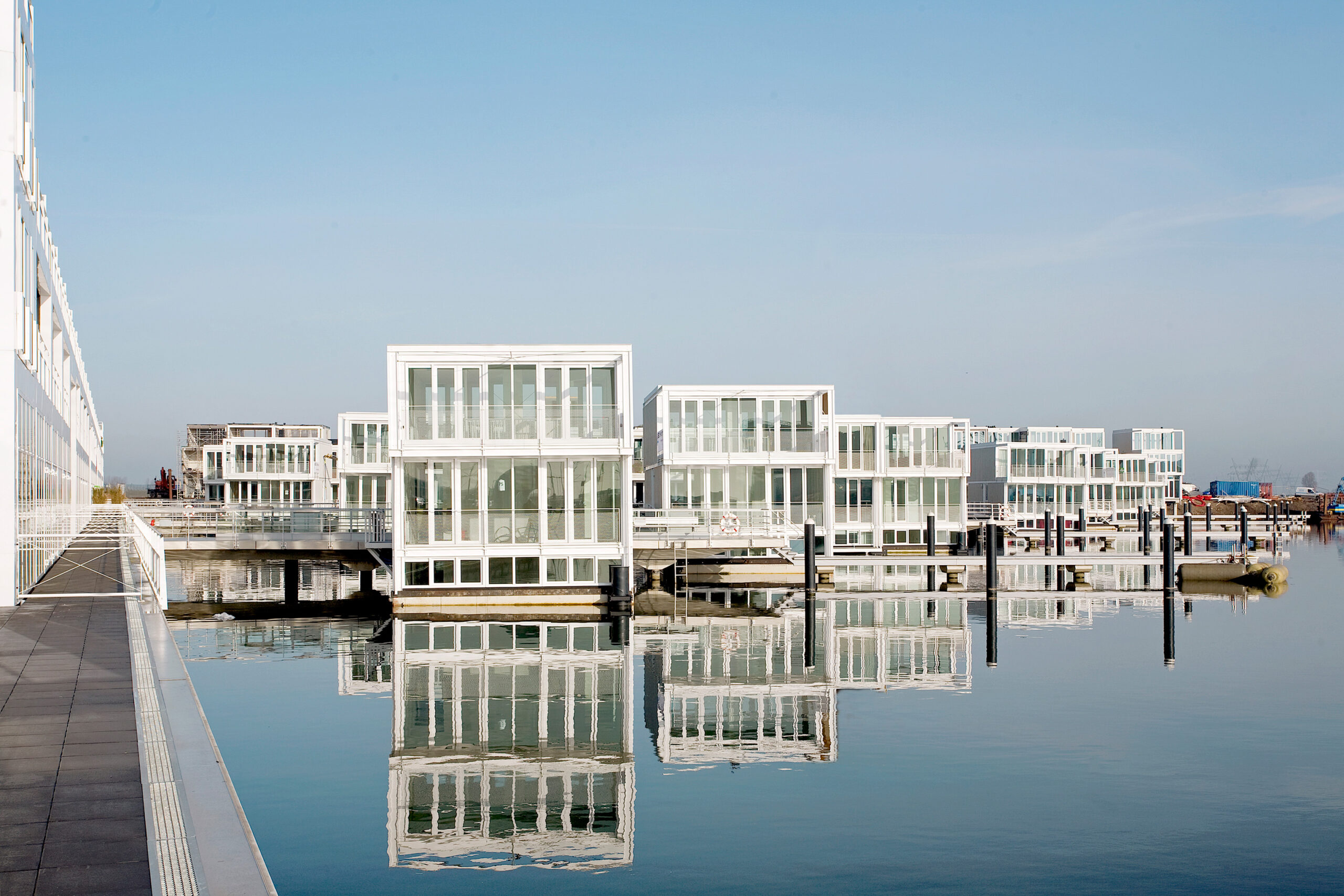
Waterwoningen by Architectenbureau Marlies Rohmer. Amsterdam, Netherlands | Photo by Marcel van der Burg.
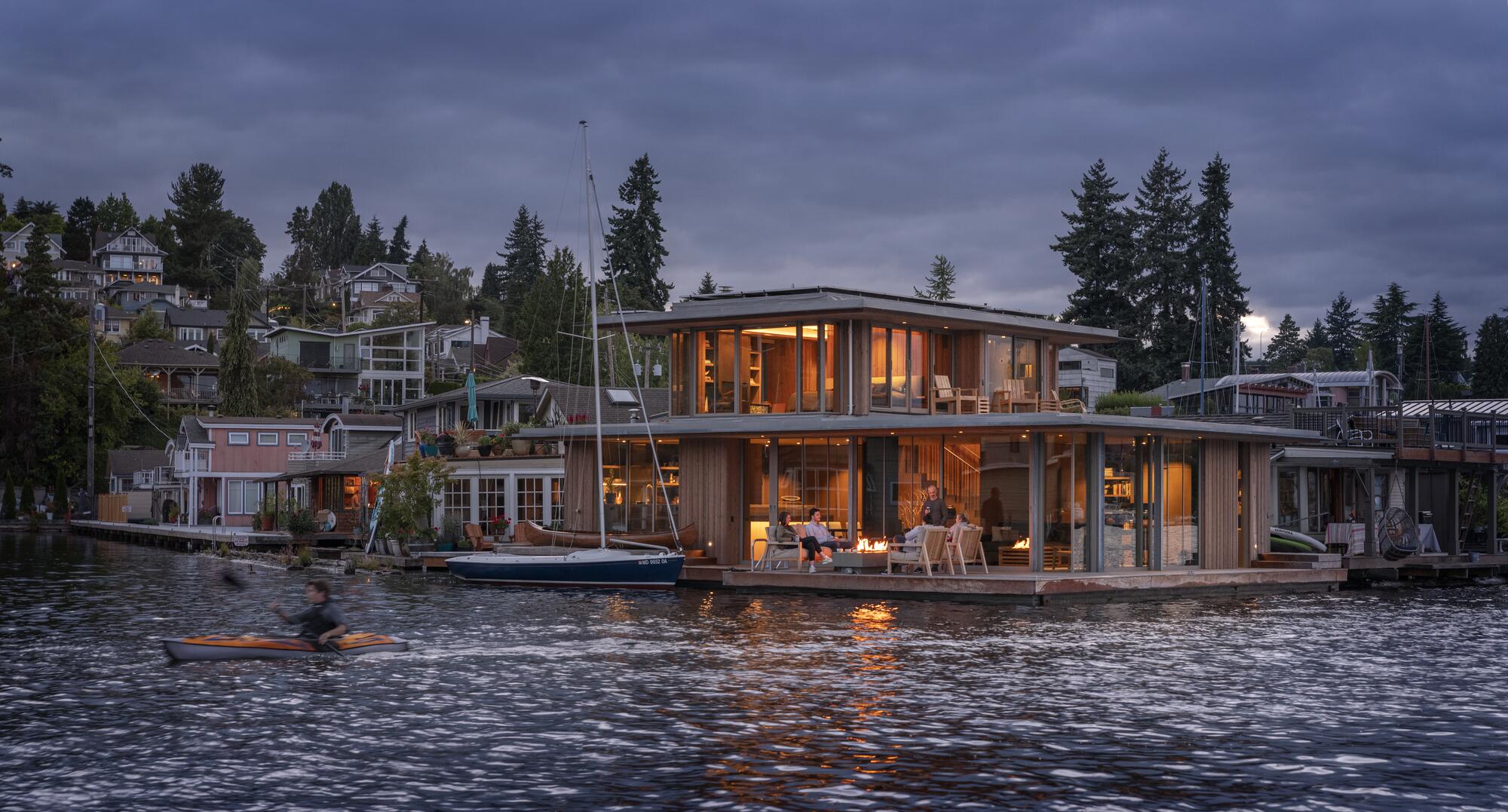
Water Cabin by Olson Kundig. Seattle, Washington, United States. | Photo by Aaron Leitz.
Water Cabin continues a long history of floating homes in Seattle. Located in a floating home community on Portage Bay, just south of the University of Washington, it establishes a cabin sensibility in an urban environment. Low to the water and small in stature, the home’s interior program is thoughtfully arranged across two levels to maximize connections to the surrounding marine environment. Water Cabin’s materiality draws inspiration from the weathered informality of a cabin. Lightly stained knotty western red cedar exterior siding will weather over time with minimal maintenance. Durable, low-maintenance metal elements like galvanized steel and flame-sprayed zinc nod to the demanding marine environment and will complement the color of the siding as it silvers.
Seascape Metropolis: Rethinking Urban Living with Vertical City
The visionary idea of residing on water transcends being solely an architectural marvel; it emerges as a comprehensive solution for coastal cities navigating the complexities of climate change. It is a testament to the possibility of redefining urban living to be not just sustainable but also regenerative, turning the threats of climate change into an opportunity for creating resilient, vibrant, and environmentally conscious urban spaces along our coastlines.
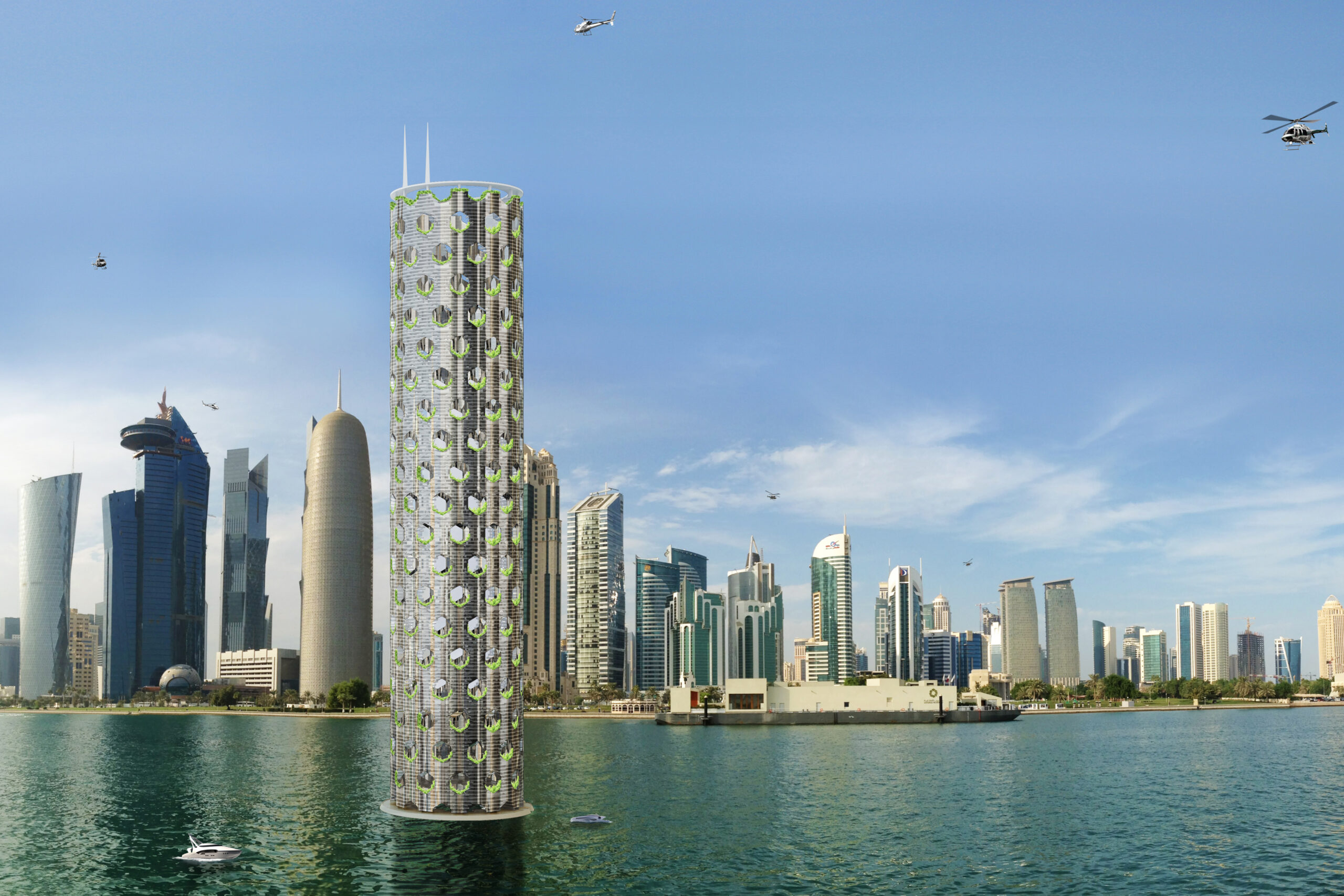
Vertical City by Luca Curci Architects. Dubai, United Arab Emirates.
Vertical City presents a visionary project proposing a water-settled “city-building” designed for 25,000 residents. This innovative initiative fosters a lifestyle deeply connected with water, challenging traditional notions of community and society. Integrating various renewable energy sources — such as wind and water turbines, solar panels, energy storage solutions, water desalination, and inclusive food production and farming — the project is dedicated to promoting a healthier lifestyle and reimagining urban living by eliminating suburban sprawl. By seamlessly blending sustainability with elevated population density, Vertical City aims to establish a zero-energy “city-building.”
While the challenges of developing land in contact with water are significant, they also offer a compelling canvas for reimagining urban landscapes. By embracing a holistic and sustainable design approach, we have the opportunity to transform potential drawbacks into catalysts for positive change, fostering resilient, inclusive, and harmonious urban environments along coastlines.
Architizer’s 12th Annual A+Awards are officially underway! Sign up for key program updates and prepare your submission ahead of the Main Entry Deadline on December 15th.

